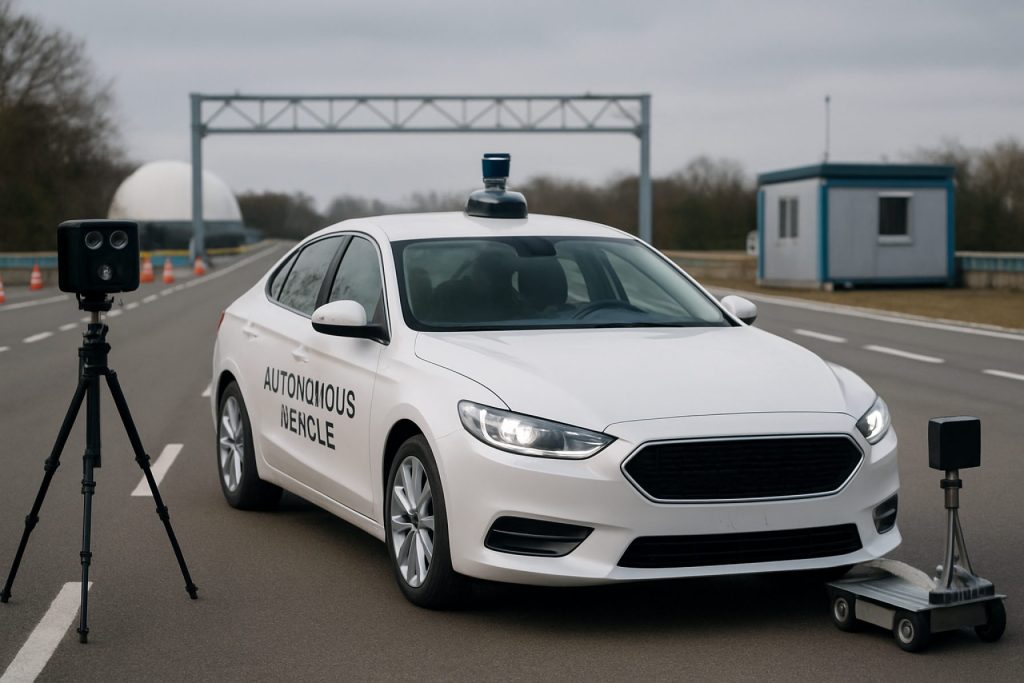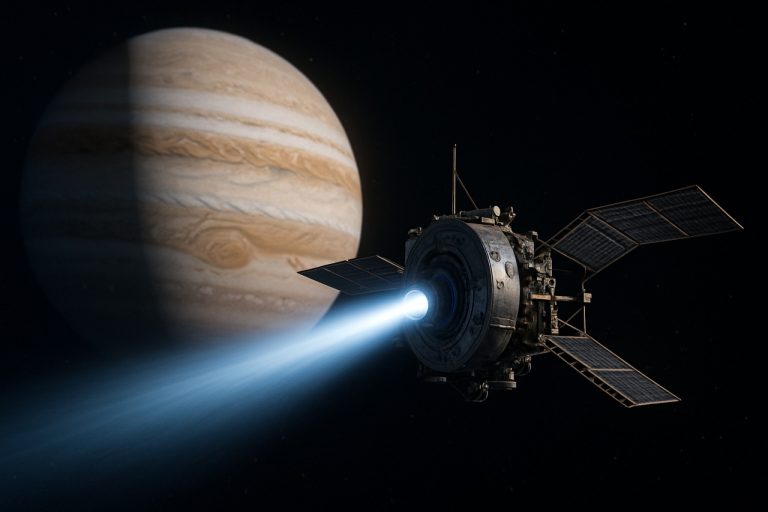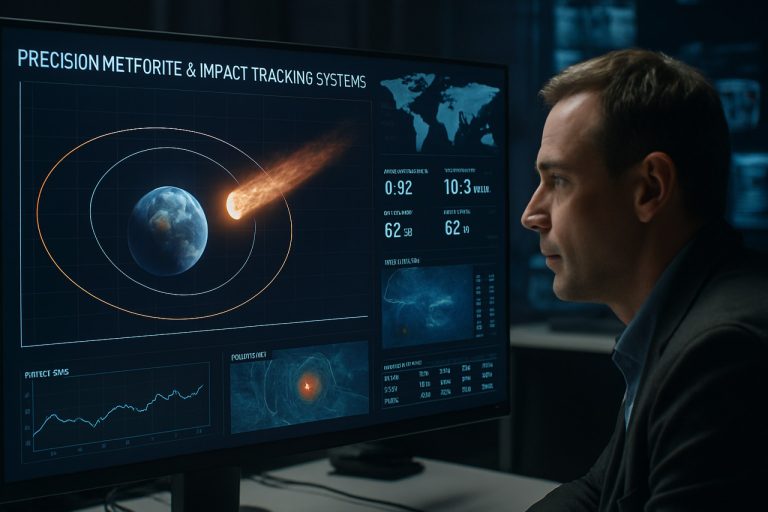
Testbed-as-a-Service Platforms for Autonomous Vehicle Systems in 2025: Accelerating Innovation, Redefining Validation, and Powering the Next Wave of Mobility. Explore How Cloud-Based Testbeds Are Transforming AV Development and Shaping the Future of Transportation.
- Executive Summary: Key Trends and Market Drivers in 2025
- Market Size, Growth Forecasts, and CAGR (2025–2030)
- Technology Landscape: Core Architectures and Cloud Integration
- Leading Providers and Industry Initiatives (e.g., NVIDIA, dSPACE, AVL, Siemens)
- Use Cases: Simulation, Validation, and Real-World Testing
- Regulatory and Safety Standards: Global Compliance and Industry Bodies
- Challenges: Data Security, Scalability, and Interoperability
- Customer Adoption: OEMs, Tier 1s, and Mobility Startups
- Investment, M&A, and Strategic Partnerships
- Future Outlook: Emerging Technologies and Market Opportunities Through 2030
- Sources & References
Executive Summary: Key Trends and Market Drivers in 2025
The landscape for Testbed-as-a-Service (TBaaS) platforms in autonomous vehicle (AV) systems is undergoing rapid transformation in 2025, driven by the escalating complexity of AV technologies and the imperative for scalable, safe, and cost-effective validation environments. TBaaS platforms provide cloud-based, on-demand access to sophisticated simulation, testing, and validation tools, enabling AV developers to accelerate innovation while meeting stringent regulatory and safety requirements.
A key trend in 2025 is the convergence of physical and virtual testbeds, allowing for seamless integration of real-world sensor data with high-fidelity simulation environments. Leading automotive technology providers such as NVIDIA and Intel are expanding their TBaaS offerings, leveraging their expertise in AI, high-performance computing, and data center infrastructure. NVIDIA’s DRIVE Sim platform, for example, enables large-scale, cloud-based simulation of complex traffic scenarios, supporting both software-in-the-loop (SIL) and hardware-in-the-loop (HIL) testing for AV systems.
Another significant driver is the increasing collaboration between automotive OEMs, Tier 1 suppliers, and cloud service providers. Companies like Microsoft and Amazon are partnering with AV developers to deliver scalable TBaaS solutions via their cloud platforms, integrating advanced analytics, digital twins, and real-time data streaming. This collaborative approach is essential for managing the vast data volumes generated by AV testing and for supporting continuous integration and deployment (CI/CD) pipelines in AV software development.
Regulatory momentum is also shaping the TBaaS market. In 2025, regulatory bodies in North America, Europe, and Asia are increasingly recognizing virtual testing and simulation as valid components of AV safety certification. Organizations such as the International Organization for Standardization (ISO) are updating standards to accommodate simulation-based validation, further accelerating TBaaS adoption.
Looking ahead, the TBaaS market is expected to see robust growth over the next few years, fueled by the proliferation of Level 4 and Level 5 autonomous vehicles, the expansion of smart city initiatives, and the need for continuous over-the-air (OTA) updates. As AV systems become more complex and interconnected, TBaaS platforms will play a pivotal role in ensuring safety, reliability, and regulatory compliance, while reducing development costs and time-to-market for next-generation mobility solutions.
Market Size, Growth Forecasts, and CAGR (2025–2030)
The market for Testbed-as-a-Service (TBaaS) platforms tailored to autonomous vehicle (AV) systems is poised for significant expansion between 2025 and 2030. This growth is driven by the escalating complexity of AV software stacks, the need for scalable validation environments, and the increasing regulatory emphasis on safety and interoperability. TBaaS platforms provide cloud-based, on-demand access to sophisticated simulation, hardware-in-the-loop (HIL), and digital twin environments, enabling AV developers to accelerate testing cycles and reduce capital expenditure on physical infrastructure.
As of 2025, leading automotive technology providers and cloud hyperscalers are actively investing in TBaaS offerings. Amazon Web Services (AWS) has expanded its AWS SimSpace Weaver and RoboMaker services to support large-scale, distributed AV simulations, while Microsoft continues to enhance its Azure-based simulation and digital twin capabilities for mobility customers. Siemens and dSPACE are integrating their simulation and HIL solutions with cloud-native architectures, enabling remote, collaborative AV testing. NVIDIA’s DRIVE Sim platform, built on Omniverse, is increasingly offered as a service, allowing customers to access photorealistic, scenario-rich testbeds on demand.
The market size for TBaaS platforms in the AV sector is projected to reach several hundred million USD by 2025, with a compound annual growth rate (CAGR) estimated in the range of 25–35% through 2030. This robust growth outlook is underpinned by the proliferation of AV pilot programs, the entry of new mobility startups, and the adoption of continuous integration/continuous deployment (CI/CD) practices in automotive software development. The shift from on-premises testbeds to cloud-based, service-oriented models is expected to accelerate as OEMs and Tier 1 suppliers seek to scale validation efforts globally and reduce time-to-market.
- Amazon Web Services is collaborating with major automakers and AV startups to deliver scalable simulation environments, supporting millions of test miles per day.
- NVIDIA reports growing adoption of its DRIVE Sim TBaaS platform among global AV developers, with a focus on scenario diversity and regulatory compliance.
- Siemens and dSPACE are expanding their cloud-based HIL and simulation services, targeting both established OEMs and emerging mobility players.
Looking ahead, the TBaaS market for AV systems is expected to benefit from increasing standardization efforts, cross-industry partnerships, and the integration of AI-driven scenario generation. As regulatory frameworks mature and AV deployment scales, demand for secure, auditable, and globally accessible testbed services will continue to rise, cementing TBaaS as a foundational pillar of the autonomous mobility ecosystem.
Technology Landscape: Core Architectures and Cloud Integration
The technology landscape for Testbed-as-a-Service (TBaaS) platforms in autonomous vehicle (AV) systems is rapidly evolving in 2025, driven by the need for scalable, secure, and realistic environments to validate increasingly complex AV software stacks. TBaaS platforms provide cloud-based, on-demand access to high-fidelity simulation, hardware-in-the-loop (HIL) testing, and data management tools, enabling AV developers to accelerate development cycles and improve safety validation.
Core architectures of TBaaS platforms are characterized by modularity, interoperability, and deep integration with cloud infrastructure. Leading providers are leveraging containerization and microservices to allow flexible orchestration of simulation workloads, supporting a wide range of AV sensors, control algorithms, and edge devices. For example, Amazon Web Services (AWS) offers cloud-native simulation environments tailored for AV development, integrating with scalable storage, compute, and AI/ML services. Similarly, Microsoft is advancing its Azure-based simulation and digital twin capabilities, enabling real-time collaboration and data sharing across geographically distributed teams.
A key trend in 2025 is the convergence of TBaaS with digital twin technology, allowing for the creation of highly detailed, dynamic models of vehicles, infrastructure, and traffic scenarios. Siemens is notable for its work in this area, providing platforms that combine physics-based simulation with cloud-based analytics to support continuous validation and over-the-air (OTA) updates for AV fleets. Meanwhile, NVIDIA continues to expand its Omniverse platform, offering end-to-end simulation and synthetic data generation capabilities, tightly integrated with GPU-accelerated cloud infrastructure.
Interoperability is being addressed through the adoption of open standards and APIs, facilitating integration between TBaaS platforms and third-party tools. Organizations such as Autonomous Vehicle Computing Consortium (AVCC) are working to define reference architectures and best practices, promoting ecosystem collaboration and reducing vendor lock-in.
Looking ahead, the outlook for TBaaS platforms is shaped by the growing demand for large-scale, scenario-based testing to meet regulatory and safety requirements. The next few years are expected to see increased investment in AI-driven scenario generation, real-time data streaming, and edge-cloud hybrid architectures, enabling more realistic and efficient validation workflows. As AV deployment expands globally, TBaaS platforms will play a critical role in supporting continuous learning, compliance, and operational excellence for autonomous vehicle systems.
Leading Providers and Industry Initiatives (e.g., NVIDIA, dSPACE, AVL, Siemens)
The rapid evolution of autonomous vehicle (AV) technologies has driven significant demand for advanced, scalable, and flexible testbed solutions. In 2025, Testbed-as-a-Service (TBaaS) platforms are emerging as a critical enabler for AV development, offering cloud-based, on-premises, and hybrid environments for simulation, validation, and verification of autonomous driving systems. Several leading technology and engineering companies are at the forefront of this transformation, providing comprehensive TBaaS offerings tailored to the needs of OEMs, Tier 1 suppliers, and mobility startups.
NVIDIA continues to be a pivotal player in the AV testbed landscape. Its NVIDIA DRIVE Sim platform leverages high-fidelity simulation and AI-powered scenario generation, enabling developers to test and validate AV software at scale. In 2025, NVIDIA’s cloud-based simulation services are increasingly integrated with hardware-in-the-loop (HIL) and software-in-the-loop (SIL) workflows, supporting both virtual and physical testbeds for end-to-end validation. The company’s partnerships with major automakers and mobility providers further reinforce its position as a TBaaS leader.
dSPACE, a German engineering solutions provider, has expanded its TBaaS portfolio with modular, cloud-enabled test environments. The dSPACE SIMPHERA platform, for example, offers web-based access to large-scale simulation and validation tools, supporting continuous integration and DevOps practices in AV development. In 2025, dSPACE is collaborating with global OEMs to deliver customized TBaaS solutions that address regulatory requirements and accelerate homologation processes.
AVL, renowned for its expertise in automotive testing and powertrain development, has invested heavily in digital testbed infrastructure. The AVL Testbed-as-a-Service suite integrates real-time simulation, data analytics, and remote access capabilities, allowing customers to conduct complex AV system tests without the need for extensive on-site resources. AVL’s focus on interoperability and open standards is driving adoption among both established automakers and new entrants in the AV sector.
Siemens is leveraging its extensive portfolio in digital industries to offer TBaaS solutions through the Siemens Xcelerator platform. By combining simulation, digital twin technology, and cloud-based orchestration, Siemens enables AV developers to perform large-scale scenario testing and system validation. In 2025, Siemens is emphasizing the integration of cybersecurity and functional safety features within its TBaaS offerings, addressing key industry concerns as AV deployment accelerates.
Looking ahead, the TBaaS market is expected to grow rapidly over the next few years, driven by increasing AV software complexity, regulatory scrutiny, and the need for scalable, cost-effective validation environments. Industry initiatives are focusing on interoperability, standardization, and the integration of AI-driven scenario generation to further enhance the fidelity and efficiency of AV testing. As leading providers continue to innovate, TBaaS platforms are poised to become a foundational element of the global autonomous vehicle ecosystem.
Use Cases: Simulation, Validation, and Real-World Testing
Testbed-as-a-Service (TBaaS) platforms are rapidly transforming the landscape of autonomous vehicle (AV) development by providing scalable, on-demand environments for simulation, validation, and real-world testing. As of 2025, these platforms are increasingly adopted by OEMs, Tier 1 suppliers, and technology startups to accelerate the deployment of safe and reliable AV systems.
A primary use case for TBaaS is large-scale simulation. Companies such as NVIDIA and Microsoft offer cloud-based simulation environments that enable developers to test AV software against millions of virtual scenarios, including rare and hazardous edge cases. NVIDIA’s DRIVE Sim platform, for example, leverages high-fidelity digital twins and AI-powered scenario generation to validate perception, planning, and control algorithms at scale. These simulation services are critical for meeting regulatory requirements and industry safety standards, as they allow for rapid iteration and comprehensive coverage without the risks and costs of physical testing.
Validation is another key application, where TBaaS platforms facilitate the integration and testing of AV subsystems in controlled environments. Bosch and Aptiv have established dedicated testbed facilities that can be accessed remotely by clients to validate sensor fusion, vehicle-to-everything (V2X) communication, and cybersecurity features. These platforms often provide standardized interfaces and data logging capabilities, enabling seamless collaboration between geographically distributed teams and partners.
Real-world testing, while still essential, is increasingly being augmented by TBaaS offerings that manage fleets of instrumented vehicles and test tracks. Aurora Innovation and ZF Friedrichshafen AG operate testbed services that allow customers to deploy their AV stacks on physical vehicles under diverse traffic and weather conditions. These services often include remote monitoring, data collection, and analytics, supporting continuous improvement cycles and regulatory reporting.
Looking ahead, the TBaaS model is expected to expand with the integration of advanced digital twin technologies, real-time data streaming, and AI-driven scenario generation. Industry collaborations, such as those between NVIDIA and Bosch, are likely to drive interoperability and standardization, further lowering barriers to entry for new AV developers. As regulatory frameworks evolve, TBaaS platforms will play a pivotal role in demonstrating compliance and accelerating the safe rollout of autonomous vehicles worldwide.
Regulatory and Safety Standards: Global Compliance and Industry Bodies
The rapid evolution of Testbed-as-a-Service (TBaaS) platforms for autonomous vehicle (AV) systems is closely intertwined with the global regulatory and safety standards landscape. As of 2025, regulatory bodies and industry consortia are intensifying efforts to harmonize standards, ensuring that TBaaS offerings support safe, compliant, and interoperable AV development across borders.
A key driver is the increasing adoption of simulation and remote testing environments, which TBaaS platforms provide, to meet the stringent requirements set by authorities such as the United Nations Economic Commission for Europe (UNECE). UNECE’s WP.29 regulations, particularly UN Regulation No. 157 on Automated Lane Keeping Systems (ALKS), have set a precedent for type approval processes that now often require extensive virtual validation—an area where TBaaS platforms excel.
In the United States, the National Highway Traffic Safety Administration (NHTSA) continues to update its AV testing guidelines, emphasizing the importance of robust, repeatable, and transparent test environments. TBaaS providers are responding by integrating compliance modules and reporting tools that align with NHTSA’s Voluntary Safety Self-Assessment (VSSA) framework, enabling AV developers to demonstrate adherence to federal safety expectations.
Industry bodies such as the Society of Automotive Engineers (SAE International) and the International Organization for Standardization (ISO) are also shaping the TBaaS landscape. SAE’s J3016 standard, which defines levels of driving automation, and ISO 26262 for functional safety, are increasingly embedded into TBaaS workflows. This integration allows AV developers to validate their systems against recognized benchmarks within the testbed environment, streamlining certification and audit processes.
Leading TBaaS providers, including dSPACE and Siemens, are actively collaborating with regulatory and standards organizations to ensure their platforms remain compliant and future-proof. For example, dSPACE’s solutions are designed to support homologation processes in line with UNECE and ISO standards, while Siemens’ Simcenter portfolio offers end-to-end traceability for safety-critical AV functions.
Looking ahead, the next few years are expected to see further convergence of global standards, with regulatory sandboxes and cross-border pilot programs leveraging TBaaS platforms for pre-market validation. The European Union’s push for a harmonized AV regulatory framework and China’s evolving AV safety requirements are likely to accelerate the demand for TBaaS solutions that can adapt to diverse compliance regimes. As a result, TBaaS platforms will play a pivotal role in enabling safe, scalable, and internationally compliant AV deployments through 2025 and beyond.
Challenges: Data Security, Scalability, and Interoperability
Testbed-as-a-Service (TBaaS) platforms for autonomous vehicle (AV) systems are rapidly evolving, but their adoption and effectiveness are shaped by significant challenges in data security, scalability, and interoperability. As the AV sector moves into 2025 and beyond, these issues are increasingly central to both technology providers and end users.
Data Security: The sensitive nature of AV data—including real-time sensor feeds, vehicle telemetry, and proprietary algorithms—makes robust security essential. TBaaS providers must ensure end-to-end encryption, secure data storage, and strict access controls. Leading AV testbed operators such as NVIDIA and Intel are investing in secure cloud-based environments, leveraging hardware-based security modules and advanced authentication protocols. However, the distributed and multi-tenant nature of TBaaS increases the attack surface, raising concerns about data leakage and intellectual property theft. Industry consortia like ETSI are working on standards for secure data exchange in connected and automated mobility, but widespread adoption remains a work in progress.
Scalability: The complexity and volume of AV testing scenarios are growing exponentially, especially as regulatory bodies demand more comprehensive validation. TBaaS platforms must scale to support thousands of simultaneous virtual vehicles, diverse sensor configurations, and real-time scenario generation. Companies such as Amazon Web Services (AWS) and Microsoft are expanding their cloud infrastructure to accommodate these needs, offering elastic compute and storage resources tailored for AV simulation workloads. Despite these advances, bottlenecks persist in network bandwidth, data synchronization, and the orchestration of large-scale, geographically distributed testbeds. The next few years will likely see further investment in edge computing and 5G integration to address these limitations.
- Interoperability: The AV ecosystem is highly fragmented, with diverse hardware, software stacks, and communication protocols. TBaaS platforms must bridge these gaps to enable seamless integration of third-party tools, vehicle models, and sensor data. Initiatives like the AUTOSAR standard and the OPEN Alliance are promoting common interfaces and data formats, but full interoperability remains elusive. Testbed providers such as dSPACE and ANSYS are developing modular, API-driven platforms to facilitate plug-and-play compatibility, yet proprietary solutions and legacy systems continue to pose integration challenges.
Looking ahead, the convergence of industry standards, cloud-native architectures, and secure data frameworks will be critical to overcoming these challenges. The next few years are expected to bring incremental progress, but achieving truly secure, scalable, and interoperable TBaaS platforms for AV systems will require sustained collaboration across technology providers, automakers, and regulatory bodies.
Customer Adoption: OEMs, Tier 1s, and Mobility Startups
The adoption of Testbed-as-a-Service (TBaaS) platforms for autonomous vehicle (AV) systems is accelerating in 2025, driven by the need for scalable, cost-effective, and collaborative testing environments. Original Equipment Manufacturers (OEMs), Tier 1 suppliers, and mobility startups are increasingly leveraging these platforms to validate complex AV software stacks, sensor integrations, and edge-case scenarios that are difficult to replicate in traditional test tracks.
OEMs such as BMW Group and Ford Motor Company have expanded their engagement with TBaaS providers to supplement their in-house proving grounds. These platforms offer remote access to physical and virtualized testbeds, enabling distributed engineering teams to conduct scenario-based testing, hardware-in-the-loop (HIL) validation, and over-the-air (OTA) update assessments. For example, BMW’s ongoing collaboration with testbed operators allows for continuous integration and deployment cycles, reducing time-to-market for new ADAS and AV features.
Tier 1 suppliers, including Robert Bosch GmbH and Continental AG, are utilizing TBaaS to validate sensor fusion algorithms, electronic control units (ECUs), and V2X communication modules. These companies benefit from the ability to test across multiple geographies and regulatory environments without the need for physical relocation of assets. The modularity of TBaaS platforms supports rapid prototyping and iterative development, which is critical as Tier 1s race to deliver next-generation components to OEM partners.
- Mobility startups—notably those focused on robotaxis, last-mile delivery, and autonomous shuttles—are among the most enthusiastic adopters. Startups such as Zoox and Nuro leverage TBaaS to access advanced test infrastructure without the capital expenditure of building proprietary facilities. This democratizes access to high-fidelity testing, allowing smaller players to compete with established automotive giants.
- Collaborative ecosystems are emerging, with TBaaS providers facilitating data sharing and joint scenario libraries among participants. This trend is exemplified by partnerships between testbed operators and industry consortia, enabling standardized validation protocols and accelerating regulatory acceptance.
Looking ahead, the outlook for TBaaS adoption is robust. As AV systems grow in complexity and regulatory scrutiny intensifies, the demand for scalable, cloud-connected testbeds is expected to surge. OEMs, Tier 1s, and startups alike are projected to deepen their reliance on TBaaS platforms through 2026 and beyond, fostering a more agile and collaborative AV development landscape.
Investment, M&A, and Strategic Partnerships
The landscape for Testbed-as-a-Service (TBaaS) platforms in autonomous vehicle (AV) systems is rapidly evolving, with 2025 marking a period of intensified investment, mergers and acquisitions (M&A), and strategic partnerships. These developments are driven by the growing demand for scalable, flexible, and cost-effective testing environments that can accelerate AV development and deployment.
Major automotive OEMs and technology companies are increasingly investing in TBaaS providers to gain access to advanced simulation, validation, and real-world testing capabilities. For example, Robert Bosch GmbH—a global leader in automotive technology—has expanded its collaborative efforts with startups and established players to enhance its AV testing infrastructure, focusing on cloud-based and remote-access testbeds. Similarly, NVIDIA Corporation continues to invest in its DRIVE Sim platform, which is offered as a service to AV developers, and has formed partnerships with both automakers and testbed operators to integrate hardware-in-the-loop and large-scale simulation capabilities.
Strategic partnerships are also shaping the TBaaS market. AVEVA Group plc, known for its industrial software, has entered into collaborations with mobility technology providers to deliver digital twin-based testbed services, enabling real-time data integration and scenario testing for AVs. Meanwhile, Intel Corporation—through its Mobileye division—has announced joint ventures with infrastructure operators to deploy connected testbeds in urban environments, supporting both simulation and live road testing.
M&A activity is expected to intensify through 2025 and beyond, as larger players seek to consolidate expertise and expand their service offerings. For instance, ANSYS, Inc. has signaled its intent to acquire niche simulation and testbed startups to bolster its AV validation portfolio, while dSPACE GmbH is actively pursuing technology partnerships and potential acquisitions to enhance its cloud-based test automation solutions.
Looking ahead, the outlook for TBaaS platforms in the AV sector is robust. The convergence of cloud computing, AI-driven simulation, and real-world testbed integration is attracting sustained venture capital and corporate investment. As regulatory requirements for AV safety and validation become more stringent, the strategic importance of scalable, on-demand testbed services will only increase, prompting further collaboration and consolidation among technology providers, OEMs, and infrastructure operators.
Future Outlook: Emerging Technologies and Market Opportunities Through 2030
The landscape for Testbed-as-a-Service (TBaaS) platforms in autonomous vehicle (AV) systems is poised for significant transformation through 2030, driven by rapid advancements in simulation, connectivity, and regulatory requirements. As AV development accelerates, the demand for scalable, cloud-based test environments is intensifying, enabling manufacturers and technology providers to validate increasingly complex systems efficiently and safely.
In 2025, leading automotive and technology companies are expanding their TBaaS offerings to address the growing need for continuous integration and validation of AV software. NVIDIA has been at the forefront, leveraging its DRIVE Sim platform to provide cloud-based, photorealistic simulation environments for AV testing. This platform enables developers to test perception, planning, and control algorithms at scale, reducing reliance on costly and time-consuming physical road tests. Similarly, Microsoft is collaborating with automotive OEMs to deliver Azure-based simulation and validation services, integrating digital twins and AI-driven scenario generation to accelerate AV development cycles.
The emergence of 5G and edge computing is further enhancing TBaaS capabilities. Ericsson and Intel are investing in edge infrastructure to support real-time data processing and low-latency communication between testbeds and AV fleets. This is particularly relevant for Vehicle-to-Everything (V2X) scenarios, where TBaaS platforms can simulate complex urban environments and dynamic interactions with infrastructure and other vehicles.
Standardization and interoperability are also gaining momentum. Industry consortia such as ETSI and 5G-ACIA are working to define common frameworks and APIs for TBaaS platforms, ensuring seamless integration across diverse AV development ecosystems. This is expected to lower barriers for smaller developers and foster a more collaborative innovation environment.
Looking ahead to 2030, TBaaS platforms are anticipated to evolve into fully integrated, AI-driven ecosystems. Advances in generative AI will enable the automatic creation of highly realistic test scenarios, including rare edge cases that are difficult to encounter in real-world driving. The convergence of digital twin technology, cloud-native architectures, and regulatory compliance tools will make TBaaS indispensable for AV certification and deployment. As governments in North America, Europe, and Asia-Pacific move toward harmonized safety standards, TBaaS platforms will play a critical role in demonstrating compliance and accelerating the safe rollout of autonomous vehicles.
Overall, the next five years will see TBaaS platforms transition from niche tools to foundational infrastructure for the global AV industry, unlocking new market opportunities for technology providers, OEMs, and mobility service operators.
Sources & References
- NVIDIA
- Microsoft
- Amazon
- International Organization for Standardization (ISO)
- Amazon Web Services
- Microsoft
- Siemens
- dSPACE
- NVIDIA
- AVL
- Bosch
- Aptiv
- Aurora Innovation
- ZF Friedrichshafen AG
- NHTSA
- ISO
- Amazon Web Services
- dSPACE
- Nuro
- AVEVA Group plc
- 5G-ACIA



